June 13, 2014
Air Date: June 13, 2014
FULL SHOW
SEGMENTS
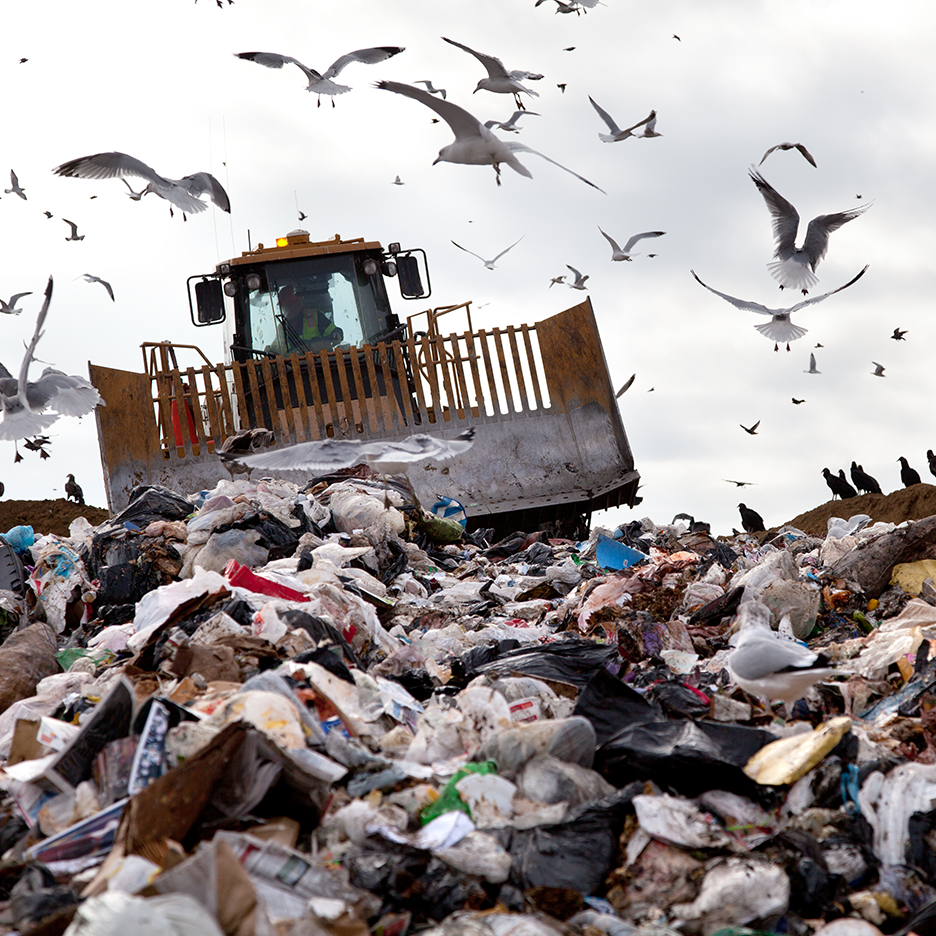
EPA Rules Ignore Methane
View the page for this story
Climate protection advocates have applauded the EPA’s recent power plant regulations, but environmental lawyer Bill Snape tells host Steve Curwood, the new rules don’t deal with methane, and that could be a serious problem for the climate. (10:00)
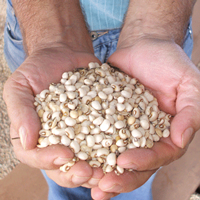
World Cup Host and Climate Leader
View the page for this story
Brazil may be struggling to be a “green” host for the World Cup, but Dan Nepstad, director of the Earth Innovation Institute, tells host Steve Curwood that Brazil is already a top winner in tackling global warming emissions, as it has reduced its tropical forest deforestation by 70% since 2005. (07:30)
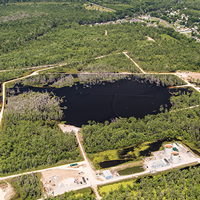
Louisiana Sinkhole Spoils Bayou Paradise
/ Emmett FitzGeraldView the page for this story
In 2012 a salt mine collapsed in Southern Louisiana, causing a sinkhole to open up just outside the town of Bayou Corne. Today, the hole is nearly thirty acres in size, and this picturesque swamp community is basically a ghost town. (12:00)
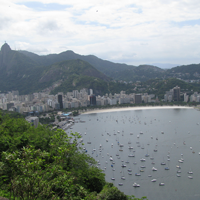
Beyond the Headlines
/ Peter DykstraView the page for this story
In this week’s trip beyond the headlines, Peter Dykstra tells host Steve Curwood about Australian coal companies sending spies to infiltrate environmental advocacy groups and a picturesque Brazilian bay filled with garbage. (04:25)
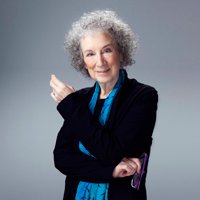
Margaret Atwood on Fiction, The Future, and Environmental Crisis
View the page for this story
MaddAddam, the final book in Margaret Atwood’s Oryx and Crake trilogy has just won the Orion Book Award for fiction. The novel chronicles the survivors of global pandemic as they try to rebuild a society with the help of some bizarre genetically engineered companions. Margaret Atwood talks with host Steve Curwood about the book and her thoughts on environmental storytelling. (13:30)
Show Credits and Funders
Show Transcript
HOST: Steve Curwood
GUESTS: Jessika Trancik, Bill Snape, Dan Nepstad, Margaret Atwood
REPORTERS: Emmett FitzGerald, Peter Dykstra
[THEME]
CURWOOD: I'm Steve Curwood. Skyrocketing methane levels change the math of global warming and raise questions about proposed EPA rules that favor natural gas over coal.
SNAPE: We've already made a decision to embrace natural gas and what I'm saying is, we've gotta get a handle on that, because right now it is out of control. We have no oversight over an industry that has huge economic power and huge power to harm the environment.
CURWOOD: Also, the giant sinkhole that devoured whole trees in Louisiana has turned a community into a ghost town.
LANDRY: It’s depressing you know. You drive down the street and you hardly see anyone where once you had a bustling little community with kids running up and down the street, and families in the yard. It's gives you a sad melancholy feeling, no doubt about it.
CURWOOD: Bayou Corne, Louisiana, its future and more this week on Living on Earth. Stick around.
[NEWSBREAK MUSIC: Boards Of Canada “Zoetrope” from “In A Beautiful Place Out In The Country” (Warp Records 2000)]
ANNOUNCER: Funding for Living on Earth comes from Stonyfield Farm. Makers of organic yogurt, smoothies and more.
EPA Rules Ignore Methane
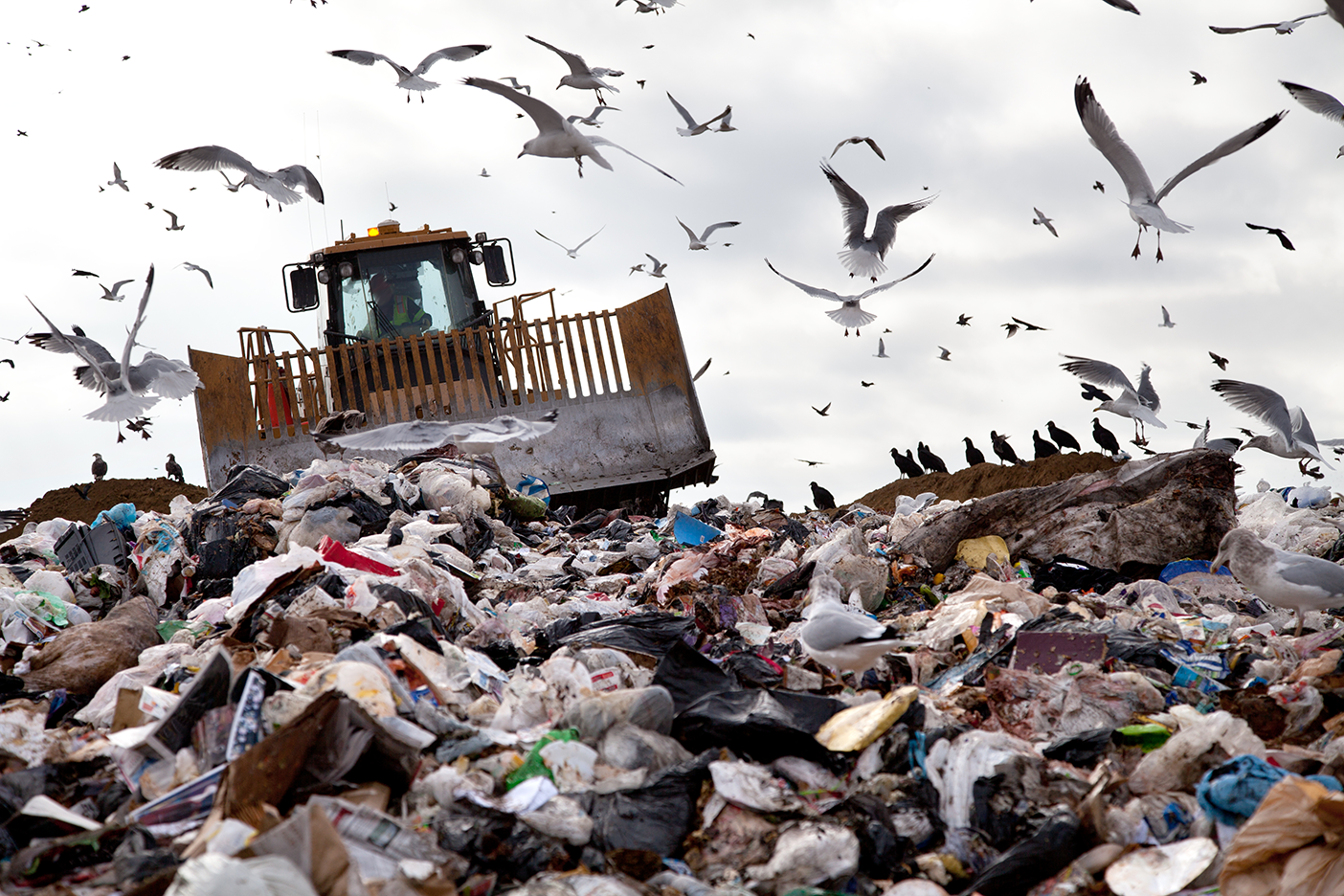
Methane is also released from landfills and cattle farms (photo: bigstockphoto.com)
CURWOOD: From the Jennifer and Ted Stanley Studios in Boston and PRI, this is Living on Earth. I’m Steve Curwood. As the evidence of human-induced climate disruption becomes more stark, many nations are cutting global warming emissions, including the US, which would slash power plant emissions 30 percent by 2030 under a proposed EPA rule. The fracking bonanza makes that goal achievable, as dirty coal-burning plants are replaced by cleaner ones burning natural gas, which is mostly methane. But a recent study from MIT casts doubt on the way we measure methane's global warming power compared with carbon dioxide. Study co-author Jessika Trancik, Assistant Professor of Engineering Systems at MIT, found that what we do now fails to account for the importance of timing.
TRANCIK: When you’re comparing methane to carbon dioxide, which decays much, much more slowly, we have this tricky problem of selecting a time horizon over which we can compare the two gases. Of course we do care about these emissions today, but we may care more about them as the background state of the climate changes.
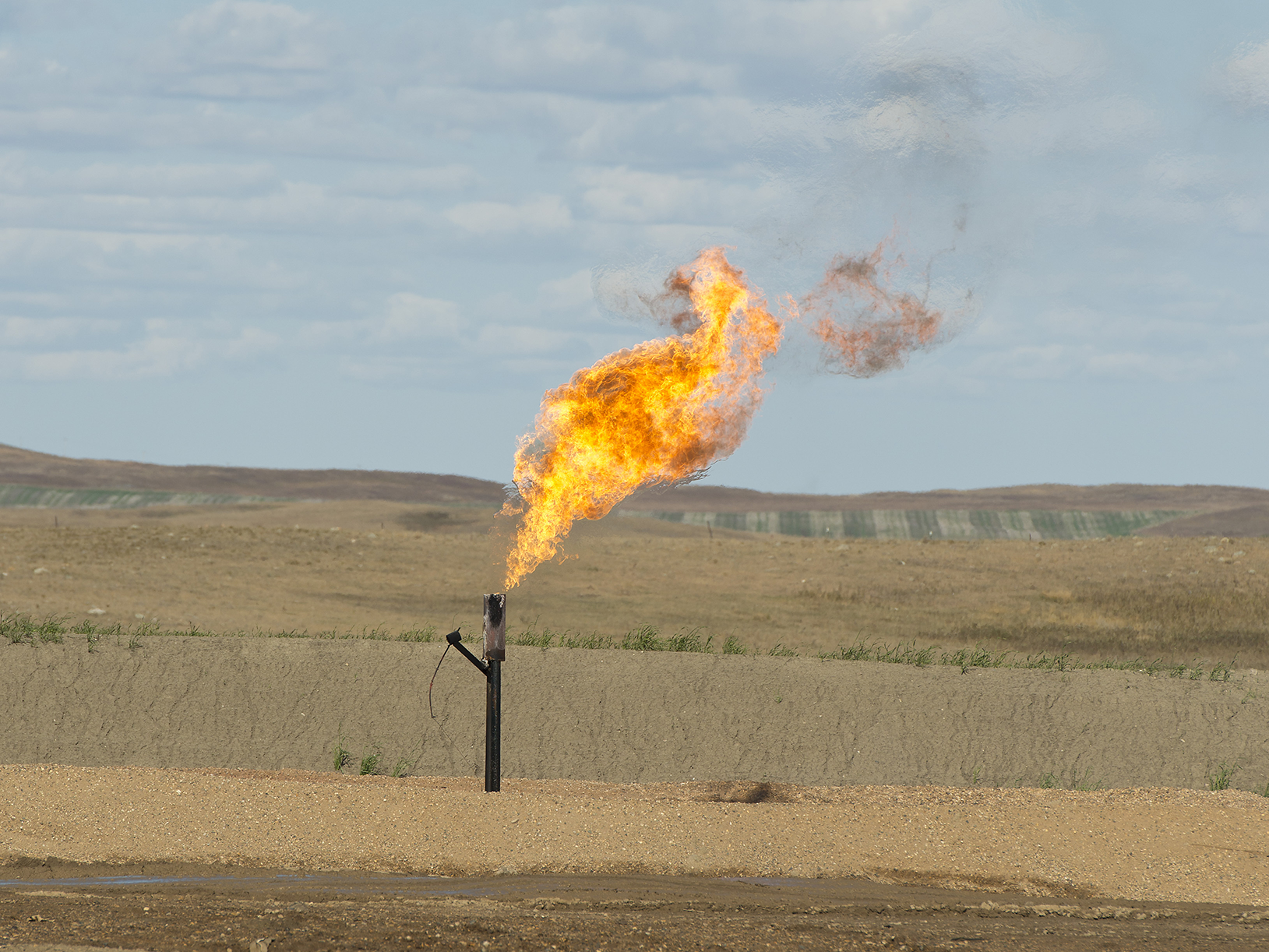
Methane emissions from natural gas production are much more potent global warming gases then CO2 (photo: bigstockphoto.com)
CURWOOD: Professor Trancik says methane starts out about a hundred times more potent as a heat-trapper than carbon dioxide, and it takes decades to break down to CO2 and water. But as we continue greenhouse emissions, we push the atmosphere closer to a dangerous tipping point, making short-lived gases like methane even more deadly. Professor Trancik proposes an alternative method of measuring the climate impact, weighting methane as thirty times more destructive than CO2 now, but rising to a hundred times more deadly by 2050.
TRANCIK: And this has really important implications for comparing natural gas to, say, coal for electricity or motor gasoline for transportation because what you find is that although natural gas has about half the climate impact of coal-fired electricity today, that advantage is greatly reduced within a couple of decades. So, within a couple of decades, now you have three quarters of the climate impact of coal-fired electricity.
CURWOOD: That's methane study co-author, Jessika Trancik from MIT. Well, the MIT analysis casts serious doubt over whether the US is making the right choice in pushing natural gas as a bridge fuel.
SNAPE: That MIT study is hugely important, and it speaks for itself which is that not only are we not accounting for various types of methane pollution, when we do account for it we're under-accounting for it because we're not realizing how powerful a greenhouse pollutant it is.
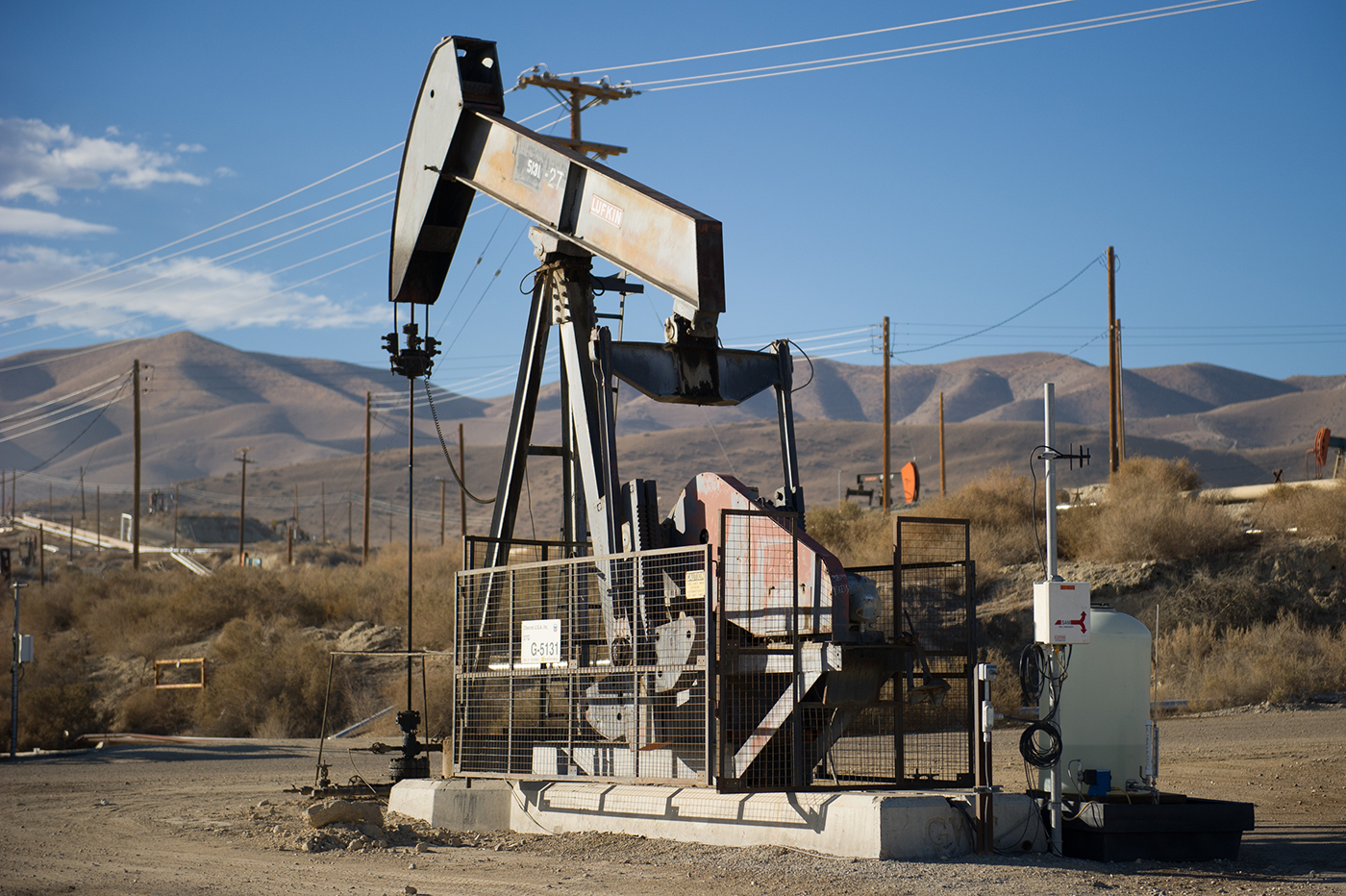
The EPA’s new power plant rules will get tough on coal, but leave natural gas essentially unregulated (photo: bigstockphoto.com)
CURWOOD: That's Bill Snape, a Fellow in Environmental Law at American University. Leaks from the natural gas system are huge sources of methane, but the EPA's proposed power plant rules deal only with CO2. And Bill Snape says methane control is one of several climate protection opportunities President Obama is ignoring.
SNAPE: What he did under the Clean Air Act here is understandably and rationally go after the biggest polluters, the power plants. But even if there's no litigation, which I think industry will litigate against it, and even if everything runs totally smoothly, which is not always the practice with our federal government, the earliest that some states would be finalizing their implantation plans under this proposed role could be as late as 2019.
CURWOOD: So what could the President do right now?
SNAPE: The President has authorities under public land laws to curtail and limit fossil fuel pollution from the public lands that all Americans own, and up to date again, he’s had a number of proposals and his cabinet officers have had a number of proposals but no definitive regulation to get that pollution under control has occurred on public lands—that would be something very tangible very discreet that the President could do tomorrow.
CURWOOD: Now, there’s been a lot of talk about how the regulations, the proposed regulations are going to affect the coal industry, but what about natural gas and its core component methane?
SNAPE: Well the natural gas industry from our read is getting off pretty easily. No pollution control that they’ll really have to install that they’re not already using. No control limits on methane and other greenhouse pollutants, so despite the fact this rule really is sound under the Clean Air Act, and I think really does create some good architecture for the future, it doesn't answer the natural gas methane question. And, in fact, not only does it not answer it, I think it is giving a nod and a wink behind the scenes to the natural gas industry. That really is the ugly underbelly of this rule.
CURWOOD: Wait, you’re saying this is a sweetheart deal for the natural gas industry?
SNAPE: It's looking pretty good for them, yes. I think the whole regulatory climate for the natural gas industry right now is very favorable for them. They’re not being regulated on private lands, the few states that have regulations really are just at the beginning stage of process—Colorado is an example. And again, on public lands, no regulation. So, yes, I think the natural gas industry right now under all the regulatory mechanisms including this proposed rule is getting a good deal.
CURWOOD: Many of the emissions reductions that the EPA is calculating here will come about by switching our electricity system from coal over to natural gas. Bill Snape, in your view how much better is natural gas from a climate perspective?
SNAPE: Well, here's the real problem and conundrum with natural gas. When it's burned at the power plant, natural gas is cleaner than coal. But when you look at how natural gas is actually mined or obtained, fracked as the case might be, and how it's then transported and then the methane releases when it's actually burned, you realize that methane, and this is what scientists are finding, is almost as dirty as coal. In fact, some studies have shown that natural gas from cradle to grave is dirtier than coal. So you cannot only look at when the gas is burned, you must look at the whole cradle-to-grave operation of natural gas. And the administration continues not really to do that. They claim they're going to do it at some point but they have not really done it.
CURWOOD: Now, methane, CH4,is much more potent than CO2 perhaps as much as 100 times more potent, some of the studies say. But they’re not in these regulations at all.
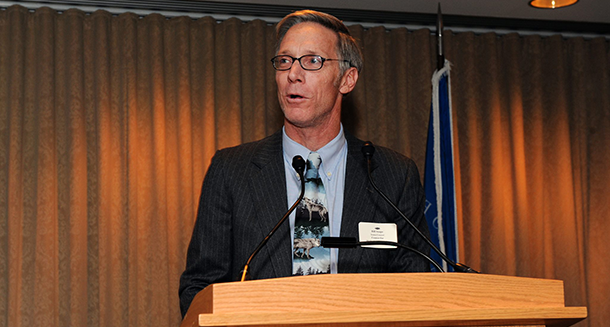
Bill Snape (photo: Center for Biological Diversity)
SNAPE: Well, methane is not in this proposed rule because, at least they allege, that these new source performance standards under the Clean Air Act go to the actual plants themselves. And because many of these plants are already coal-burning power plants, what they're doing is creating a performance standard that says how clean those plants need to be, they’re not demanding certain types of fuel, in other words, for these power plants.
CURWOOD: Now, you're an attorney. In your view to what extent can methane be regulated under the Clean Air Act? How's it regarded? Is it considered a pollutant?
SNAPE: Methane is considered a pollutant under the Clean Air Act, and methane can absolutely be regulated even more under the Clean Air Act. The Clean Air Act has a provision called the National Ambient Air Quality Standard, NAAQS for short, and there's nothing stopping the EPA from having an ambient air quality standard relating to methane and making sure that our methane in the atmosphere is at levels that scientists think it is safe. And at this point in time, EPA and the White House have declined that type of ambient air quality standard.
CURWOOD: Why do you think the Obama administration is putting so much stock in natural gas as a way to deal with emissions?
SNAPE: I think it's an easy way out. There's a lot of it. There's a lot of people, or at least enough people making a lot of money, and those people making money are now donating lavishly to both political parties. I think the system is reflecting the power of the natural gas industry. I think on the positive side though you're seeing the President finally use his bully pulpit to talk about climate change in a forceful way. And while he's not doing everything we would like him to do, he’s not moving as fast as we would like them to move, I think the fact that he’s now finally in the arena is a very positive sign. And what's interesting about the current debate and the way it’s all going to play out is that there are a few wackos in Congress that are climate deniers but the real battle now are going to be the mostly Republicans who are the government deniers who are going to say, “Well, yeah, climate’s a problem but we don't want Obama to deal with it. We don't want EPA to deal with it.” So now we’re going to get into the fights of how to deal with climate change and that I think is where the President could be very useful, and I think is already laid out a good template of using existing law to deal with this problem.
CURWOOD: Some analysts worry that once natural gas wells are in the ground and all that infrastructure for gas is in place, it won't be easy to transition away from natural gas in time to meet climate concerns. Your feelings?
SNAPE: I think that's absolutely true. I think the natural gas infrastructure that we're putting in place in literally every corner of the country is very worrisome. We’re now building and proposing to build more export terminals for natural gas that's similarly a disaster. We’re pouring a lot of money and effort to help an industry that really is not good for the general public. I think what you’re hearing the environmental community saying, what I'm saying, is we’ve got to get a handle on that because right now it is out of control. We have no oversight over an industry that has huge economic power and huge power to harm the environment.
CURWOOD: To what extent do you think we would be smarter just to stick with what we have for a current infrastructure which is mostly coal and shrink it down?
SNAPE: Well I think that would be equally disastrous just because coal really is so dirty. I think the real answer, and I think you see kernels of this in the President's role this week, we've got to get the American population using less energy, that actually is one of his four planks. And we need to really ramp up wind and solar and geothermal that is also one of his planks. Then I think the final piece of the puzzle is to get rid of all the fossil fuel subsidies, the $20 billion plus every year that our federal government literally hands out to the oil gas and coal industry. If we could get wind and solar on equal playing field financially, I think we would be on the right track. Ultimately this is not a fight between Republicans and Democrats. It's not a fight between the President and Congress. This is a fight between normal American citizens and the fossil fuel industry that has had its way for over 100 years. And that is really what the Obama administration is trying to do, is trying to reasonably internalize the costs that the fossil fuel industry has put on all of us: BP oil spill in the Gulf of Mexico, the Shell Arctic spills of oil—that's what were trying to prevent here and that's really what is at issue with this power plant rule, and that's why it's so important, that's why it is potentially historic to put this rule in place.
CURWOOD: Bill Snape is a Fellow at the American University School of Law and Legal Counsel for the Center for Biological Diversity. Thanks for joining us today, Bill.
SNAPE: It’s been my pleasure. Thanks for having me.
Related links:
- Read the MIT study on Methane Emissions
- Bill Snape/The Center for Biological Diversity’s Comments on Methane and President Obama’s new power plant regulations.
- Bill Snape/The Center for Biological Diversity’s comments on the EPA’s proposed existing power plant rules.
- Read about the CBD’s anti-fracking campaign
CURWOOD: Coming up: good news from Brazil about the tropical forest loss. Keep listening to Living on Earth.
[MUSIC: Monty Alexander “Love Notes” from Yard Movement (Island Records 1996)]
[CUTAWAY MUSIC: Tal Farlow “Meteor” from The Swinging Guitar Of Tal Farlow (Verve Records 1957)]
World Cup Host and Climate Leader

A Brazilian farmer holds a handful of soybeans, one of the largest historical drivers of deforestation in the Amazon. (Photo: Bobby Bascomb)
CURWOOD: It's Living on Earth, I'm Steve Curwood.
[SOUND OF VUVUZELAS]
CURWOOD: That loud, raucous trumpet called the vuvuzela, dominated the soundtrack of World Cup Soccer in South Africa in 2010. This year, in Brazil, the Ministry of Sports promoted a different noisemaker.
[SOUND OF CAXIROLA]
The caxirola, a small plastic shaker, was unveiled as an environmental symbol by Brazil's President Dilma Rousseff.
[President Rousseff talking about caxirola in Portugeuse]
VOICEOVER: ...this green and yellow image of the caxirola, this fact that we are talking about a ‘green’ plastic, about a country that has the led the world in sustainability. And at the same time, it is an object capable of doing two things: combining images with sounds and taking us to our goals.
CURWOOD: But the caxirola turned out to be an effective missile for angry fans, and the objects have been banned from the matches. Thousands if not millions of caxirolas were made, and they now serve as a symbol of wasteful excess spending.
That's much the same criticism leveled against the massive stadia erected in cities like Manaus where their value is unclear once the World Cup's over, while promised infrastructure and transport improvements for the country have yet to be built. But Brazil still has something to celebrate.
[Announcer shouting“Gooooooooooooooooaaaaaaaaaalllllll!” WITH CROWDS CHEERING IN BACKGROUND]
CURWOOD: Along with the World Cup, there's news of recent success in protecting forests. Brazil used to clear nearly 8,000 square miles of rainforest every year, an area the size of Massachusetts. But since 2005, the rate of deforestation has dropped 70 percent, now it's about 2,000 square miles, the size of Delaware. Keeping that forest standing prevents 3.2 billion tons of carbon dioxide from entering the atmosphere—about two years worth of emissions from all cars and light trucks in the U.S. Dan Nepstad, the Executive Director and Founder of Earth Innovation Institute, says several factors explain Brazil’s success in cutting deforestation.

The Caxirola was invented by Brazil to be the sound of the World Cup but it turned out to be a convenient missile for angry fans and was quickly banned in the stadiums. (photo: captiv8 promotions)
NEPSTAD: There’s a really fascinating story here about how big industries, like soy industries and meat packing industries came together with non-governmental organizations to basically work out a deal so that soybeans grown on fields that had been cleared after a cut-off date, July 2006, would no longer be acceptable. This is called a soy moratorium. And it started with a Greenpeace campaign that targeted some McDonald's stores in Europe and really put Cargill and McDonald's and other groups like that up against the wall. More recently in 2009, there was something called the cattle agreement. Not quite as many companies involved, but once again companies wanting to be protected from the reputational risk of buying from farmers who might be clearing forests, and therefore vulnerable to the sort of attacks that Greenpeace does.
CURWOOD: Now the government took another approach directly with growers. Tell me about the governments blacklist, please.
NEPSTAD: The deforestation blacklists basically said, listen, if your county is clearing more than 40 square km of rainforest every year, then your farmers can no longer access the big public agricultural credit programs. One farmer, who’s clearing a lot of forest, that farmer puts entire county at risk of losing its access to credit. In some countries that wouldn't be a big deal, but Brazil makes $50 billion available to its farmers every year through credit. When that policy was put in place, suddenly all of these counties started to organize and the mayor’s office got together with the beef sector with the soy sector and they said, “Let's fix this problem.” And they did it through collective action. About 11 of the 36 blacklisted counties have come off the list. They’ve gotten their deforestation below that 40 square km threshold.
CURWOOD: The Brazilian Amazon's huge, and the government has what, some 400 federal agents to patrol the area to see that there's not improper deforestation going on. How does that work?
NEPSTAD: They’ve developed some really amazing approaches. One is these hot spots that appear on the MODIS satellite sensor that are indicative of deforestation sets up a whole alert system and sometimes a helicopter full of armed men will go out to a big deforestation clearing and grab people and put them in handcuffs. The trick there though is: who owns that land? It’s been very difficult. Everyone knows when the helicopters are coming, or the jeeps on the ground. And often those teams of workers will scatter into the bush, and that's why another innovation is equally important if not more and important. It's called the Rural Environmental Registry. Basically it says that if you own land you've got to submit the parameters of your property to the government. It means that if you can see on the map, oh, here's a new patch of deforestation, you see whose land that deforestation took place on, and then you can cut them off from credit—even embargo their property—meaning that it's illegal for them to sell whatever they're producing on that farm, so that the instruments for enforcement are really getting much more powerful.
CURWOOD: Now, the overall trend in Brazil over the last eight years or so has been this 70 percent reduction in the deforestation rate, but over the last year or so that deforestation has increased. Why are more trees being cut down? How many more and why?
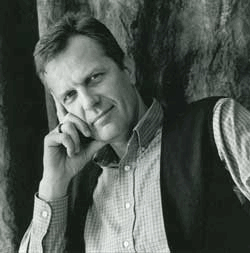
Dan Nepstad is Senior Scientist and Executive Director of Earth Innovation Institute. (Photo: Dan Nepstad)
NEPSTAD: We tend to think of Brazil, we think of the Amazon, and not its shorter brother to the south or sister maybe is a better way to put that called the Cerrado. These are the woodlands and the savannas and native grasslands. Since 2010, deforestation has begun to inch back up in the Cerrado. And I think part of what we’re seeing there is because these voluntary supply-chain interventions of cutting farmers of soy or beef off of markets, those have been really focused on the Amazon. They haven't yet been applied to the Cerrado. So I think we're getting to point now where we need to expand and build upon the success in the Amazon to have a truly national agenda.
CURWOOD: Dan Nepstad, how important is it to the government to Brazil to be seen positively when it comes to tackling deforestation, especially in light of hosting the World Cup right now.

Farmers in the Amazon are required to keep 80% of their land forested. (Photo: Bobby Bascomb)
NEPSTAD: It's fascinating to me how little the Brazilian government has made of the fact that they've reduced deforestation 70 percent and have reduced emissions more than any other country. Brazil really could very legitimately say to the world, “We're not just the best in soccer, we're the best in agricultural growth, but we're also doing our part to keep forest standing, protect indigenous lands and greatly lower greenhouse gas emissions.”
CURWOOD: Dan Nepstad, is the Executive Director and Founder of Earth Innovation Institute and one of the authors of the article on deforestation in Brazil in the current issue of Science. Thank you so much.
NEPSTAD: Thank you, Steve.
Related links:
- Earth Innovation Institute
- Article: Slowing Amazon Deforestation Through Public Policy and Interventions in Beef and Soy Supply Chains
[MUSIC: Getz/Gilberto “O Grande Amor” from Getz/Gilberto Featuring Antonio Carlos Jobim (Verve Records 1964)]
Louisiana Sinkhole Spoils Bayou Paradise

Protest gators in their Mardi Gras finest (photo: Emmett FitzGerald)
CURWOOD: Back in 2012 a massive sinkhole appeared in a cypress grove just outside of Bayou Corne, a small town in Southern Louisiana that shares its name with the local marsh lands. The giant gulf opened up when an underground cavern made by salt mining collapsed. The company Texas Brine had been drilling into one of the many salt domes beneath Louisiana to extract sodium chloride for plastics production at nearby petrochemical plants. Living on Earth’s Emmett FitzGerald first visited Bayou Corne in 2013, as the community struggled to respond to the catastrophe unfolding around them. And so far things have only gotten worse.
FITZGERALD: Any time there’s an environmental problem in Louisiana, scientist Wilma Subra is on the case. She first showed me around Bayou Corne a year and a half ago.
SUBRA: It is heart-wrenching to see it compared to what it was like when you were here last time. It really is.
[CAR DRIVING]
FITZGERALD: As we drive into town, past pipelines and gas flares, Wilma points through a gap in the trees.
SUBRA: OK, so, and there’s the sinkhole you see it?
FITZERALD (on tape): Oh yeah. It looks a little bit bigger.
SUBRA: Oh yeah, it’s growing. It’s growing constantly.
FITZGERALD: The last time I was here, the sinkhole covered 20 acres. Now it’s almost half as big again. The 29-acre hole is filled with dirty water—a polluted lake in the middle of a forest. Sonny Cranch, a spokesperson for Texas Brine, says he thinks the sinkhole is done growing.

Texas Brine has erected berms around the sinkhole to try and contain its growth. Officials think the sinkhole is almost done growing, but some worry that the hole could expand all the way to the Bayou. (Photo: Jeffrey Dubinsky/Louisiana Environmental Action Network)
CRANCH: The sinkhole seems to have reached its maximum size right now. It has not grown hardly at all in the last eight months. So we feel that it’s been contained and contained properly.
FITZGERALD: But a video shot on April 1 shows the sinkhole eating a forty by ten-foot slab of earth. Wilma says that as sediment continues to flow into the collapsed cavern underground, the sides of the hole slough in, swallowing entire trees into the brackish muck. She’s worried that if the sinkhole keeps growing, the salty water could get into the bayou.
SUBRA: I think the issue right now is that it’s going to get to Bayou Corne and then it’s going to flow into the lake systems all the way to the Gulf.
FITZGERALD: Wilma says that if the brine from the sinkhole gets into that sensitive fresh water system, it would be an ecological disaster.
SUBRA: The salt water, the brine, will kill all the vegetation all the plant and animal life on that bayou system, and so its just going to move down there like a great big brine spill and just contaminate and destroy everything.
FITZGERALD: It’s already destroyed a once tranquil, swamp-side community. When the sinkhole first opened up, local officials ordered residents to evacuate, and many people moved out. Still, the homes and the yards were neat and tidy, as if their owners planned to return any day. Today the streets are abandoned and desolate.
SUBRA: There’s weeds in all the yards, “keep out” signs, no trespassing signs, empty houses. It’s really, really a sad situation.
FITZGERALD: We turn down a street called Sauce Picante and park next to a log-cabin style house with a green tin roof that belongs to the Gregoire family. When the evacuation order went out, the Gregoires moved into a camper in the neighboring town of Pierre Parte, but Wilma thinks the family may be back.
SUBRA: Their garbage cans are out here see, so they must be staying here or spending a good bit of time.
FITZGERALD (on tape): So you can tell which houses have people in them by the garbage cans?
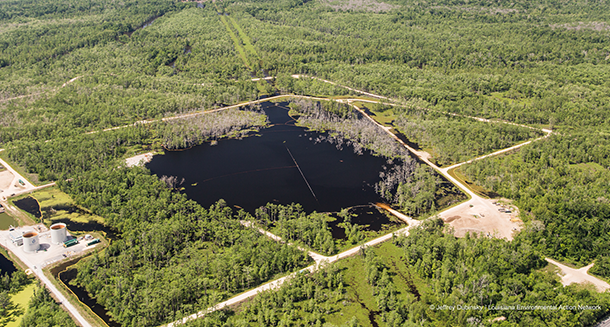
The sinkhole at Bayou Corne (photo: Jeffrey Dubinsky/Louisiana Environmental Action Network)
SUBRA (on tape): Right, right. But we didn’t see any other garbage cans, did we?
[FOOTSTEPS AND FRONT DOOR SLAMS]
FITZGERALD: Jennifer Gregoire meets us at the screened front door. Her two kids hide behind her legs as she tells us that life in the camper was harder than she had expected.

Jennifer Gregoire’s house on Sauce Picante in Bayou Corne (photo: Emmett FitzGerald)
GREGOIRE: The camper is too small. The lot was too small where we were; it was too close to the highway. The kids couldn’t play. On top of it, you figure little bitty bathroom and a ten gallon water tank. It’s not enough to bathe four people.
FITZGERALD: So a few months ago they moved back to Bayou Corne. Jennifer says the kids are glad to be home, but she’s nervous.
GREGOIRE: Is the sinkhole getting bigger? Definitely. It’s still dangerous. We still have that worry that, what if the monitors go off? What if something happens?
FITZGERALD: The monitors Jennifer’s talking about measure natural gas. When the sinkhole first opened up, it released a pocket of gas into the groundwater under the town. Gas started bubbling up in back yards, and Texas Brine installed monitors in houses to warn people in case the gas beneath them reached an explosive level.
[SOUND OF WELL]
FITZGERALD: The company also drilled 55 wells throughout the town to try and suck the gas out of the aquifer. Wilma Subra again.
SUBRA: So this is a well that’s going down to that layer of gas floating on the aquifer. And so it’s bringing the gas up to the surface, and then pushing it down that hosey pipeline.
FITZGERALD: From there the gas is pumped to the outskirts of town where it’s burned off in giant flares. Texas Brine spokesperson Sonny Cranch says the company’s making good progress getting the gas out.

The gas is flared off at the edge of town (photo: Emmett FitzGerald)
CRANCH: We’ve removed about 28 million cubic feet of gas.
FITZGERALD: He’s confident there isn’t much left.
CRANCH: It’s a finite amount we think. There’s been no recharge that’s been indicated, so we think that gas will all be out in the next several of months.
FITZGERALD: But John Boudreaux, director of Emergency Response for Assumption Parish, isn’t so sure. There’s still gas in the aquifer, he says, and that remains his biggest safety concern.
BOUDREAUX: That risk still exists, in fact some areas show gas in the shallow sands and those sands are only twenty feet beneath the homes. So that risk is not diminished, it’s still there.
FITZGERALD: Jennifer Gregoire, living on Sauce Picante, has decided to live with that risk. She says she doesn’t have much of a choice.

This well, next to a home, sucks natural gas up from the aquifer below (photo: Emmett FitzGerald)
GREGOIRE: I understand the dangers and the risks I’m putting my family in, but it’s cheaper, and it’s easier. I can’t afford to buy nothing else.
FITZGERALD: The Gregoires are one of only about 20 families left in Bayou Corne. If a car drives down Sauce Picante today, it’s likely either disaster tourists or looters. Jennifer says it’s no longer a good place to raise a family.
GREGOIRE: My son just had a birthday we can’t…[CRYING] we couldn’t throw a party for him this year at the house. That was bad for him. Nobody wants to come here.
FITZGERALD: Since the sinkhole developed, Texas Brine has bought out 66 property-owners, but many more residents have taken legal action. On April 15, Texas Brine reached a $48.1 million dollar settlement with a class of around 90 households. Sonny Cranch calls it a fair deal.
CRANCH: Those individuals will receive not only an amount for the value of their property, but an amount as, additional compensation for, let’s call it damages, but it will be above and beyond the value of the property, the fair market value of the property.
FITZGERALD: A court-appointed special master will decide how to divide up the $48 million.
CRANCH: Then there will be a closing, and we will acquire their property.

A sign on the outskirts of Bayou Corne (photo: Emmett FitzGerald)
FITZGERALD: But some locals don’t want any part of that.
LANDRY: OK, the name is Dennis Landry and I live at 120 Sportsman’s Drive Belle Rose, Louisiana, also known as Beautiful Bayou Corne.
FITZGERALD: Dennis runs a once popular fishing lodge called Cajun Cabins.
LANDRY: If you like the outdoors and you like ducks and guns—sportsman’s paradise—this is it.
FITZGERALD: The walls of Dennis’ home are covered with vintage rifles, fishing rods, and an assortment of stuffed ducks and geese. Right now, Dennis is renting out his cabins to state officials involved in the cleanup, but he worries about the future of his business.
LANDRY: It’s been a year and a half since I’ve been able to rent to my regular customers, new people who still call, wanting to come, and I tell them, well, I don’t have anything available right now. So what’s going to be the long-term impact?
FITZGERALD: Dennis knows there’s natural gas beneath his house, but for now, he and his wife are sticking it out.
LANDRY: We still live with a suitcase packed and our medicine all in one bag ready to go at a moment’s notice. We’ve kind of learned to live with the monitors and live with the gas, and keeping our fingers crossed that all these vent wells work and they get the gas out.
FITZGERALD: Environmental disasters are a fact of life in Louisiana, where weak environmental regulation has enabled rampant, often risky resource extraction. The BP oil spill in 2010 was state’s most high profile eco-catastrophe, but in 2003, a natural gas storage cavern leaked beneath the town Grand Bayou, a few miles down the road from Bayou Corne. The entire town was evacuated, and all that’s left today are cement slabs where the houses used to be.
But one man in particular wants to use the sinkhole at Bayou Corne to spur environmental regulation at the state level.
[AMBIENT JAZZ MUSIC]
HONORE: My name is Russell Honore, Liutenant General United States Army, retired.
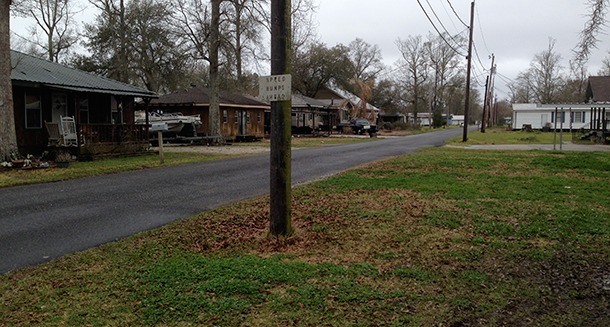
Today the streets of Bayou Corne are desolate (photo: Emmett FitzGerald)
FITZGERALD: General Honore is a local legend around here. He coordinated the military relief effort during Hurricane Katrina in 2005, but since retiring he’s become a champion for the environment in Louisiana. At a restaurant in downtown New Orleans, he says the situation in Bayou Corne shouldn’t surprise anyone.
HONORE: All the extraction companies with all the lobbyists they have, they have bought our government. And they’ve created laws that favor them and their greed. As a result of that, we end up with a situation like we have at Bayou Corne.
FITZGERALD: Last year, General Honore launched The Green Army, a coalition of organizations working together to advance an environmental agenda throughout the state. The Green Army is working with Wilma Subra and others to tighten regulations on salt domes, but they’re thinking bigger than Bayou Corne. The most worrying environmental problem in Louisiana may be the coastal erosion crisis. Every year the state loses 25 to 35 square miles of coastal wetlands to the Gulf of Mexico. Many scientists blame gas companies for building pipelines and canals through the delicate marshes, and General Honore wants the Green Army to put a stop to it.
HONORE: The Green Army doesn’t have an address it’s an idea, of people coming together to say you must stop polluting our environment, because if you don’t stop polluting this environment, we won’t be able to live here anymore. Our coastline will go away and the Gulf of Mexico will be in New Orleans.
FITZGERALD: The Green Army supports a lawsuit filed by the New Orleans area regional levee board, demanding that 97 oil and gas companies restore Louisiana’s coastal marshes. But Governor Bobby Jindal recently signed legislation that would prevent the lawsuit from moving forward. General Honore says that if they want to save Louisiana’s environment, first they’re going to have to fix the government.
HONORE: The head of the committee that oversees oil and gas in Louisiana, guess what business he’s in. He’s got a gas company, and he’s the head of the committee that writes the laws that control oil and gas. How could that be?
FITZGERALD: Louisiana is the second largest producer of natural gas, and the seventh largest producer of oil in the United States, but General Honore says that most people don’t benefit from all this resource extraction.
HONORE: Growing business is good, creating jobs, but in Louisiana we’re the second poorest state. What have the people of Louisiana gotten from this suffrage we've been through?
FITZGERALD: Back on Bayou Corne, Dennis Landry tells me he has sympathy for these companies, even Texas Brine. He used to work in the gas fields.
LANDRY: I mean they’re out just like any other business in the world they’re out to make a profit. If they can do it and they can do it cleanly without sacrificing the environment, you know let’s do it. The world needs that oil and gas. The world needs brine produced by Texas Brine. The state just needs to be at the top of their game to regulate, make sure they’re doing it the right way where it’s environmentally safe.

Environmental Scientist, Wilma Subra (photo: Emmett FitzGerald)
FITZGERALD: But that didn’t happen with Texas Brine, and now he and his neighbors are paying the price.
LANDRY: It’s depressing, you know. You drive down the street and you hardly see anybody where once you had a bustling little community with kids running up and down the street and families in the yard. It gives you a sad melancholy feeling, no doubt about it.
FITZGERALD: Then Dennis tells me about an old journal he recently found.
LANDRY: Called Life on Grand Bayou, written by Louise Dupre Hernandez.
FITZGERALD: He says Louise was born in Grand Bayou in 1919 and lived her whole 70 years there.
LANDRY: But 37 years ago she wrote in that book, ‘We have a new neighbor at Bayou Corne, Texas Brine.” And she goes on to just make two sentences, I think. “Texas Brine is a ruination to the land and the area.” Thirty-seven years ago, boy, was that a premonition of something to come. Thirty-seven years ago.

Dennis Landry, in what he calls his Bayou Paradise home (photo: Emmett FitzGerald)
FITZGERALD: But Landry says her premonition went unheeded.
LANDRY: There seemed to be plenty of warning signs that something wasn’t right, and plenty of time to change course. And it didn’t happen. They just kept on plugging along plugging along, mining their cavern, mining their cavern until the unthinkable happened. You know?
FITZGERALD: At the edge of town looking out over a ring of gas flares, a hopeful future for Bayou Corne is hard to picture. With the settlement, more and more residents will sell their homes, and as people continue to leave, the once vibrant community is beginning to look like a ghost town. Dennis Landry still wants to stay, but no matter what happens with the sinkhole or the gas, his bayou paradise will never be the same.
FITZGERALD: For Living on Earth, I’m Emmett FitzGerald in Bayou Corne, Louisiana.
[MUSIC: “Bye Bye Bayou Corne” by Mona Dugas (Self-produced provided by the artist)]
Related links:
- Wilma Subra works for the Louisiana Environmental Action Network
- The Green Army
CURWOOD: Coming up: novelist Margaret Atwood with a new honor, the Orion Prize. That's ahead here on Living on Earth. Stay tuned.
ANNOUNCER: Funding for Living on Earth comes from the Grantham Foundation for the protection of the environment. Supporting strategic communications and collaboration in solving the world’s most pressing environmental problems. The Kendeda Fund, furthering the values that contribute to a healthy planet, and Gilman Ordway for coverage of conservation and environmental change. This is PRI, Public Radio International.
[CUTAWAY MUSIC: Tal Farlow “Meteor” from The Swinging Guitar Of Tal Farlow (Verve Records 1957)]
Beyond the Headlines
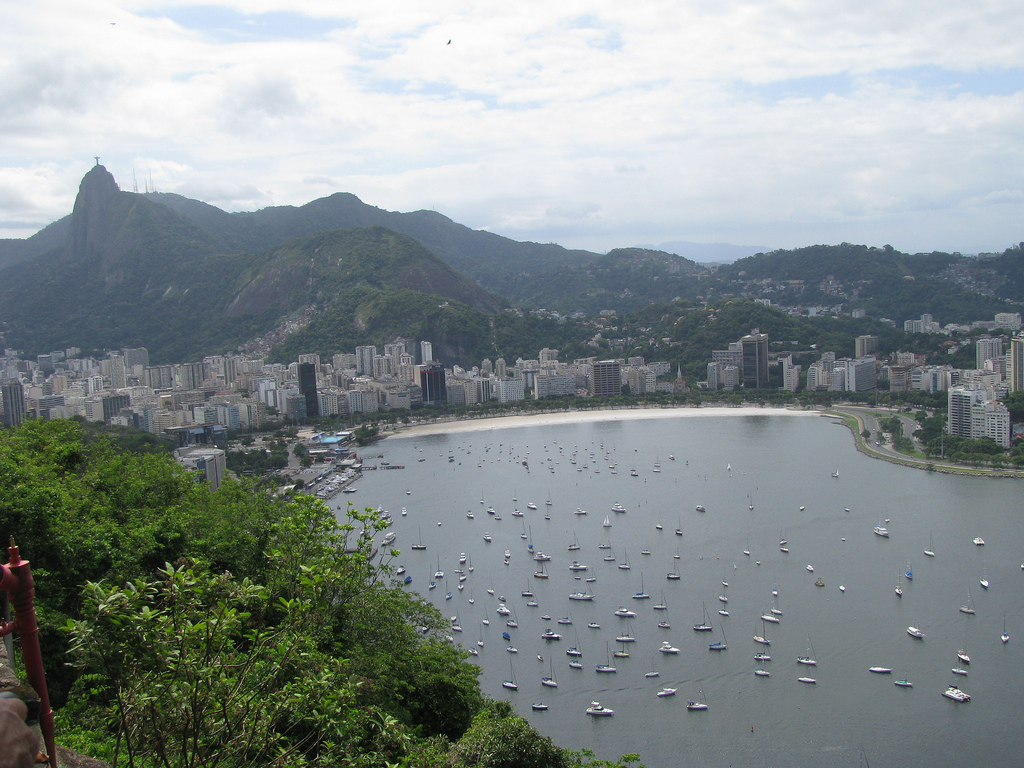
A photo of Rio de Janeiro from Guanabara Bay, the same venue 2016 Olympic sailors will have –they may have to navigate around heaps of trash (via Flickr user ra_o)
CURWOOD: It's Living on Earth. I'm Steve Curwood. Time now to check in with Peter Dykstra, publisher of Environmental Health News, that's EHN.org and Daily Climate.org to find out what's lurking beyond the headlines. He's on the line from Conyers, Georgia. Hi there, Peter.
DYKSTRA: Hi, Steve. Spies and sports are topping the agenda this week. We’ll do the spies first—coal spies to be precise.
CURWOOD: Wait a second. Coal spies? People are spying on coal?
DYKSTRA: No, it’s more like the coal, and the coal industry spying on people. There's a reporter, Tom Allard of the Sydney Morning Herald says that big players in the Australian coal industry are hiring ex-intelligence officers to infiltrate the groups that are concerned about climate change and concerned about big new Australian coal mining proposals. He reports that there are several shadowy security firms who hire ex-spooks, give them fake identities and send them in to mostly volunteer organizations to gather information on protests and political activities.
CURWOOD: I don’t want to sound too much like Tom Clancy, but it seems coal has its own “Black Ops.”
DYKSTRA: Yeah, and they’re probably data mining, too. But the coal spies have had their cover blown by the largest newspaper in Australia. Or have they?
CURWOOD: And you said you have some sports for us this week, too.
DYKSTRA: Yes, as we’ve heard, Brazil’s hit the world sports jackpot round the world—the World Cup underway this week at sites all over the country, and the Summer Olympics are coming to Rio in two years. But in Guanabara Bay, which is the site of the 2016 Olympic sailing events, all is not well. The Bay is said to have spectacular views of Rio de Janeiro and the surrounding mountains, but that’s only as long as you don’t look down at the water.
CURWOOD: I take it there’s a bit of a pollution problem, huh?
DYKSTRA: Not just your standard-issue water pollution problem, but Guanabara Bay is apparently a traditional garbage dump for things like furniture. There was one Olympic hopeful training in the bay who capsized after hitting a submerged sofa, but they’re finding a few human corpses there as well and apparently quite a few dog carcasses.
CURWOOD: What is it about the Olympics and dogs? Didn’t the Sochi Winter Olympics have a stray dog problem this past winter?
DYKSTRA: Yes indeed, but in Sochi, at least quite a few of those dogs ended up getting adopted due to the media spotlight. There won’t be any adopting of the floating dogs in Rio. The city’s Olympic organizers had promised a thorough cleanup before the games begin. They said recently they won’t have the bay cleaned up by the time the games begin in 2016, but give them at least a little credit for being honest enough to admit that it's not gonna happen.
CURWOOD: OK now, what can you snatch from the annals of environmental history for us this week?
DYKSTRA: Oh, it's a big one in the history of acid rain. Forty years ago this month, a couple of researchers named Gene Likens and F. H. Bormann published a paper in the journal Science. It’s just about one of the earliest acknowledgements that acid rain was posing a major threat to forests. Likens and Bormann and their colleagues did work in an experimental forest called Hubbard Brook; it’s in the White Mountains of New Hampshire. They documented fish-kills and forest damage, and then they linked that damage to acidic rain and snow. That acid rain and snow came from coal-burning power plants, notably some huge, high-sulfur plants in the Ohio River Valley, that were sending acidic smoke into the atmosphere. And that acid did its damage hundreds of miles away in places like New England, and the forests of eastern Canada, and elsewhere.
CURWOOD: Now you don’t hear so much about acid rain as you did ten or twenty years ago, has the problem blown away?
DYKSTRA: We’ve put a dent in acid rain in North America, but it’s hardly vanished as a problem. In places like China where high-sulfur coal-burning is still rampant, so is acid rain. Some day, when the book is written on environmental history, scientists like Likens and Bormann and their Hubbard Brook Research Station will be remembered as environmental heroes. And a couple of other heroes were at the Canadian Experimental Lakes Area, also a pioneer in acid rain research. It was recently targeted by the Canadian Government, in massive cutbacks in environmental science, but the Experimental Lakes area was saved by funding from the provinces of Ontario and Manitoba, and also from nonprofit grants.
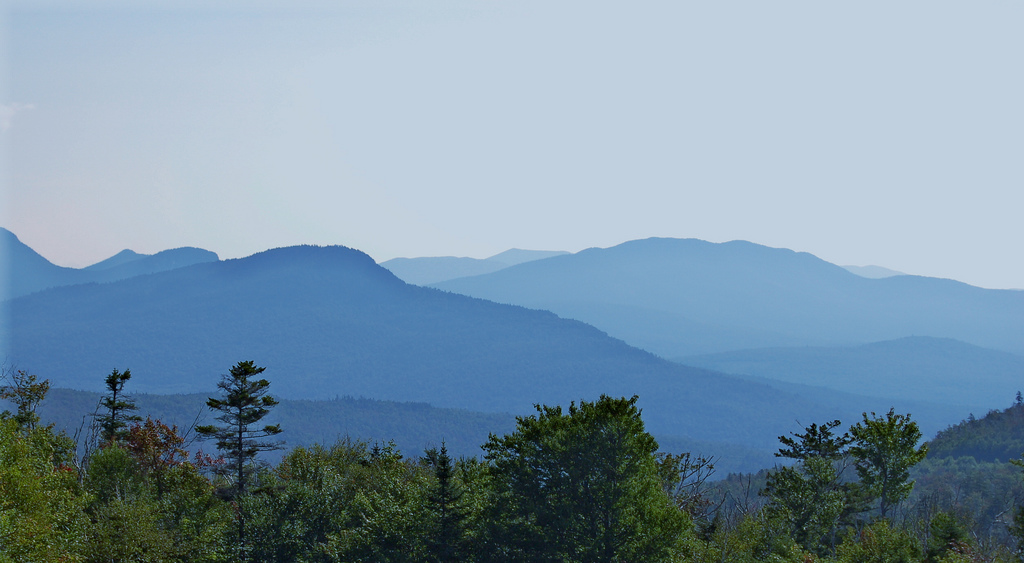
The White Mountains of New Hampshire, where Gene Likens and F. Herbert Bormann linked fish deaths and forest damage to acid rain (via Flickr user Bruce_Bruce948)
CURWOOD: OK. Thanks, Peter. So our stories this week, we have Australian industry, who wants to know more about people while the Canadian government wants people to know less.
DYKSTRA: Right.
CURWOOD: Peter Dykstra is Publisher of Environmental Health News that’s EHN.org and the DailyClimate.org. Thanks so much, Peter.
DYKSTRA: Thanks a lot, Steve. We’ll talk to you soon.
Related links:
- Read about coal spies
- The Toxic Guanabara Bay
- More about acid rain in the Hubbard Brook Experimental Forest
- Gene Likens Today
- NYTimes obituary of F. Herbert Bormann
CURWOOD: And there's more on these stories at our website LOE.org.
[MUSIC: Howlin Wolf “Look-A-Here Baby” from Ain’t Gonna Be Your Dof (Chess records 1994)]
Margaret Atwood on Fiction, The Future, and Environmental Crisis
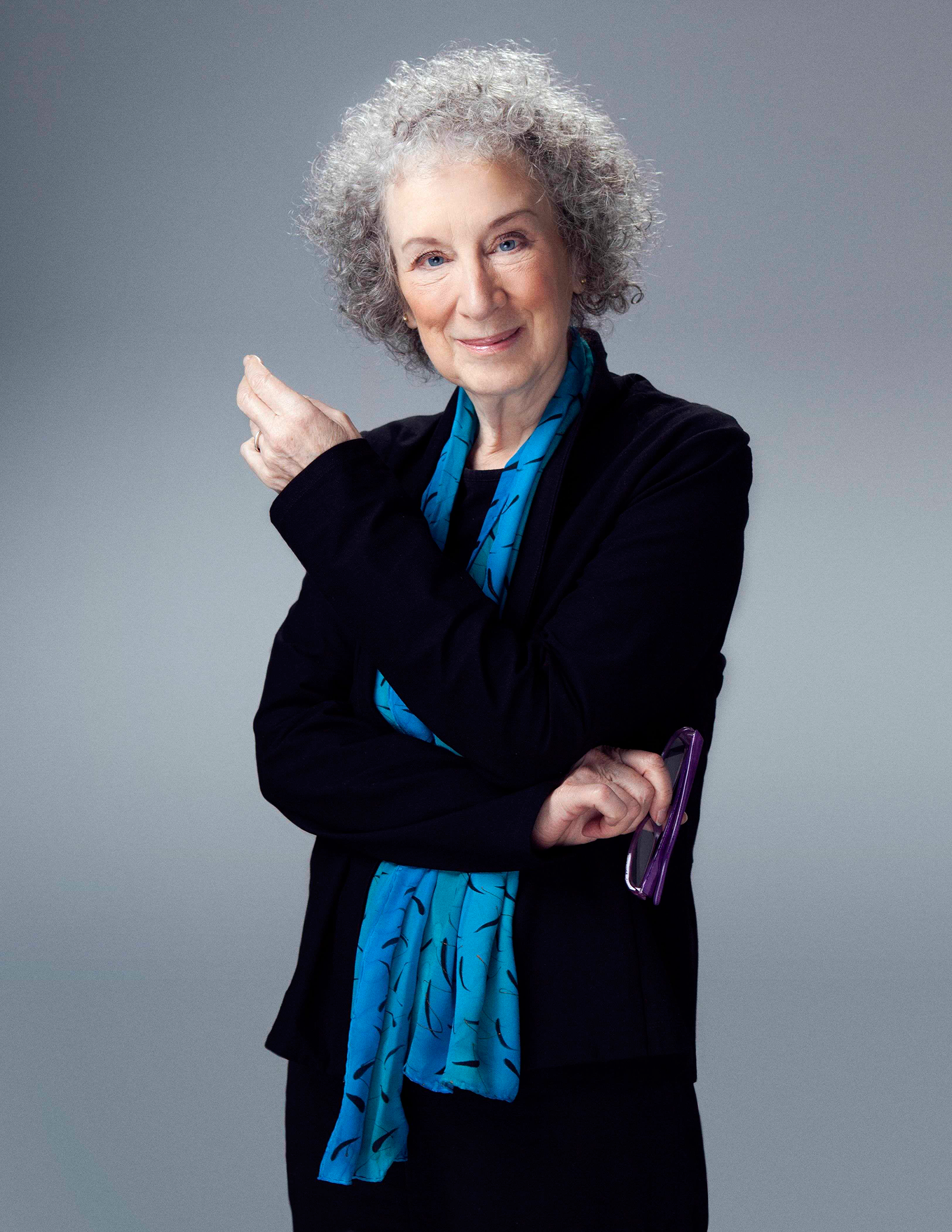
Author, Margaret Atwood (photo: Jean Malek)
CURWOOD: Every year Orion Magazine gives an award to the best environmental book of the year. But this year they added a fiction prize, and it goes to novelist and environmental activist, Margaret Atwood. Ms. Atwood has won many honors, including the Arthur C. Clarke Award and the Booker Prize. The Orion Book Award is given to a work that, “deepens readers connection with the natural world.” She joins us now from Toronto. Welcome to Living on Earth, Ms. Atwood.
ATWOOD: Thank you very much.
CURWOOD: The book that won the prize is called MaddAddam. It's part of a trilogy, though—it’s the final book in the Oryx and Crake trilogy. I think it's fair to describe it as a chronicle of the survivors of a global pandemic as they try to survive and rebuild a new society.
ATWOOD: I think that would be fair.
CURWOOD: So tell us about the world you've created here, and what inspired it.
ATWOOD: Well I think real-life inspired it, as it usually does if you trace back far enough in anybody's created world. So I first started writing the trilogy in 2001. And when I first started it, I was in Australia with a bunch of birdwatchers talking about extinction, so I think it came initially out of that, but also as Whistlers said about his painting, also a lifetime of experience, because I grew up with biologists, and I've been hearing these kinds of speculations for really a very long time now. How long have we got? Are we as a species dooming ourselves to extinction? How do we have to think and feel to change course?
CURWOOD: Wow. So you grew up with biologists. Do you think in another life maybe Margaret Atwood might have been a scientist, maybe a mycologist like your character Pilar in the book?
ATWOOD: Probably not the mushrooms.
CURWOOD: [LAUGHS] Birds maybe?
ATWOOD: But maybe the biology. I was quite good at it when I was doing it. In fact, I got better marks in it than in English because for the English, they used to take, and this is so mean, they used to take half a mark off for each spelling mistake. And, like a lot of writers I'm a bad speller because we tend to spell by ear.

MaddAddam is the Orion prize-winning final book in the Oryx and Crake trilogy
CURWOOD: [LAUGHS] You must have done a lot of biological research for this book, huh?
ATWOOD: Well it's a hobby of mine. I've always kept up with it as best I could through what I think of as pop-science, which is the kind with the colorful pictures where you don't have to do the math. So I like to hear what other people are doing and what they've discovered without actually having to do it myself. And, I have an older brother who is a biologist, and he's always ready to send me things like new research on the size of mouse brains, etc.
CURWOOD: Well, if you ever stop writing and need a gig, that’s what we do here on Living on Earth.
ATWOOD: [LAUGHS] Is that what you do? Mouse brains?
CURWOOD: [LAUGHS] Well, we try to boil it down.
ATWOOD: Well, have you heard the latest? They've rejuvenated an old mouse by giving it young mouse blood. So, was Dracula right all along?
CURWOOD: [LAUGHS] So let's talk a bit about your characters. Some of the most fascinating characters in this book are the Crakers.
ATWOOD: Well, they’re not fascinating to the human beings who are living side-by-side with them because they don't share some of our interests. So their conversation can be somewhat boring for humans, such as ourselves.
CURWOOD: You created these as, well, I guess they’re people—they are genetically-engineered beings of...
ATWOOD: They’re genetically-engineered people, but they've been modified by their creator to avoid as a species the kinds of configurations that have gotten us as a species historically into so much trouble. So for instance, they don't need agriculture of any kind because they don't need clothing, and not only are they vegetarian they can eat leaves and grass like rabbits, but unlike us. So they don't have to have farms or gardens, they can just munch away on trees.
CURWOOD: Yeah, one of the jokes in this book is that they eat kudzu.
ATWOOD: Well, somebody's got to it. [LAUGHS] It’s taking over and you can eat it—it's edible. I haven't noticed it for sale in any gourmet shops lately, but maybe that is to come. Anyway so that's one of their advantages. They've got built-in sunblock and built-in insect repellent. They’re nonviolent. They wouldn't be able to understand the concept of the war. They just wouldn't understand why people would be doing that, but maybe best of all they will never suffer from romantic rejection because, unlike ourselves, but like a lot of other mammals, they mate seasonally. And just to be more than helpful, when they're in season parts of them turned blue so there's never any confusion.
CURWOOD: You know, after reading this, I have to say I'll never use the term blue or sea-blue [LAUGHS] without at least laughing to myself if not out loud.
ATWOOD: Well, yes, it gives a whole different dimension to blue movies. But for them it's, it's very very convenient and they just find it a natural way of behaving.
CURWOOD: So these people represent what, a chance for a do-over? Or what for humanity?
ATWOOD: Well, they have been created by a genetic engineer called Crake, and he is probably looking at the large mega problem which we as a species are facing, which is that we are extremely numerous and we’re using up more than we’re replacing. So he feels that by rebooting the human race as it were, for which he of course has to eliminate the existing one as much as he is able, because we, not being non-aggressive would make pretty short work of these people. He would feel that we have been given a whole new lease on life.
CURWOOD: Margaret Atwood, in your version of the fall of humanity, where do you think people went wrong?
ATWOOD: Oh well, depends what you mean by wrong because we are a pretty complex species, and what is wrong for one person may be right for another. And a lot of our virtues are also disabilities. For instance, we’re very very loyal to our own groups, but that means we wish to defend those groups. And what does that lead to? Yes, you know the answer to that. So we are very creative. Crake tried to eliminate music, but he couldn't do that. It seems to be pretty built in. And he also tried to eliminate symbolic thinking that he felt led to monarchies, religions, wars and all kinds of undesirable things, but as it turns out, he was unable to eliminate symbolic thinking as well. So the Crakers, even as we watch them, are learning about things like pictures. What is the picture? Well, it's not the real thing, but it represents the real thing. And stories. They've discovered stories, and as it turns out they can't get enough of them, especially stories about themselves. Does that remind you of anybody you might know?
CURWOOD: [LAUGHS] A lot of this book, yes, does have to do with storytelling. Why tell stories, Margaret Atwood?
ATWOOD: It seems to be one of the things that we come with. If you look at children before the age of four or five, there are a number of things that they just pick up very very readily. One of them is language; one of them is music, but another one, which kicks in very early is the ability to understand and then tell narrative sequences of events—in other words, stories. And some of the thinking about that is that would've given a species who developed it, a very big edge in survival because if you can tell the younger generation a story about why they shouldn't go swimming in the river in the place where Uncle Charlie got eaten by crocodiles, they don't have to find that out for themselves. We learn through stories way, way faster and deeper than we learn, for instance, through graphs and strings of numbers.
CURWOOD: Now we have a lot of scientists, activists, politicians on this broadcast, but not a lot of novelists; some. What do you think fiction can bring to the environmental conversation that those other voices can't?
ATWOOD: A novel is the next best thing to being there, say, the neurologists who study brain activity. It's even more immersive than for instance a television show or film because the brain has to do a lot of inventing while you are reading—you are supplying the sets, the costumes, the soundtrack and a lot of the interpretation, you the reader. So you’re a participation in any novel that you're reading. So let us say that it's an in-depth experience and for that reason, it can be very very effective if you want to put a person into a situation that you wish to have them imagine.

Orion Book Award 2014
CURWOOD: You specialize now in this act of making things up to tell a story. Where do you find the power?
ATWOOD: OK. I'm tempted to tell you a really elaborate lie about that, which could be pretty good. I could have put in some human sacrifice and, you know, goat blood, full moons and things like that, but I wont do that. I will say that I really have no idea, but I read a lot as a child. I was a reader, and one of the reasons I was a reader was that I grew up in the north of Canada where there was not only no movie theater or television, but there was also no school or grocery store or running water or electricity or many other people. But there were a lot of books and nobody ever told me that I couldn't read a book. They never said, “put that down,” or, “that's too old for you.” And I indeed read a lot of books that I probably shouldn't have read at the age that I read them—The Collected Works of Edgar Allan Poe, including the melting corpse story—maybe not so much at the age of eight.
CURWOOD: I guess not. You don’t seem none the worse for wear though?
ATWOOD: You mean, it didn't ruin my life. On the contrary. Quite frequently young people will say, “What shall I do? I want to be a writer. What should I do?” And one of the things people do, including me, always say to them is, “Well you should read.”
CURWOOD: We’re just about out of time, but how do think somebody like you—I’m thinking of the eight-year-old Margaret Atwood living up closer to the Arctic Circle without a whole bunch of books around—how do think she would react to this trilogy?
ATWOOD: I read a huge amount of science fiction as a young person. And, I think it is an age in which people frequently do that, for instance, Ray Bradbury was publishing in the 50’s when I was an adolescent, and so was John Wyndham, and I read all of H.G. Wells and a number of the other sci-fi classics so I would probably have gobbled it up; although, I might've been a bit disappointed at that age that it wasn't on another planet.
CURWOOD: Margaret Atwood is the award-winning author from Toronto. Her latest book, MaddAddam, just won the Orion Book Award for fiction. Thanks for taking the time with us today, Ms. Atwood.
ATWOOD: A pleasure.
CURWOOD: Anything you like to add to this discussion?
ATWOOD: Keep hopeful. It’s a chore.
Related links:
- Orion Book Award
- More about Margaret Atwood on her website
- Check out more from Orion Magazine
[MUSIC: Bill Laswell “Beyond The Zero” from Dub Chamber 3 (Polygram 2000)]
CURWOOD: Living on Earth is produced by the World Media Foundation. Naomi Arenberg, Bobby Bascomb, Emmett Fitzgerald, Helen Palmer, Adelaide Chen, James Curwood, Lauren Hinkel, Jake Lucas, Abi Nighthill, Jennifer Marquis and Olivia Powers all help to make our show. Jeff Turton is our technical director. Alison Lirish Dean composed our themes. You can find us anytime at LOE.org. And like us on our Facebook page, it’s PRI’s Living on Earth. And we tweet from @LivingOnEarth. I'm Steve Curwood. Thanks for listening.
ANNOUNCER 1: Funding for Living on Earth comes from the Grantham Foundation for the protection of the environment. Supporting strategic communications and collaboration in solving the world’s most pressing environmental problems. The Kendeda Fund, furthering the values that contribute to a healthy planet, and Gilman Ordway for coverage of conservation and environmental change. Living on Earth is also supported by a friend of The Nation, where you can read such environmental writers a Wen Stephenson, Bill McKibben, Mark Hersgaard and others at TheNation.com. This is PRI, Public Radio International.
ANNOUNCER 2: PRI, Public Radio International.
Living on Earth wants to hear from you!
Living on Earth
62 Calef Highway, Suite 212
Lee, NH 03861
Telephone: 617-287-4121
E-mail: comments@loe.org
Newsletter [Click here]
Donate to Living on Earth!
Living on Earth is an independent media program and relies entirely on contributions from listeners and institutions supporting public service. Please donate now to preserve an independent environmental voice.
NewsletterLiving on Earth offers a weekly delivery of the show's rundown to your mailbox. Sign up for our newsletter today!
 Sailors For The Sea: Be the change you want to sea.
Sailors For The Sea: Be the change you want to sea.
 The Grantham Foundation for the Protection of the Environment: Committed to protecting and improving the health of the global environment.
The Grantham Foundation for the Protection of the Environment: Committed to protecting and improving the health of the global environment.
 Contribute to Living on Earth and receive, as our gift to you, an archival print of one of Mark Seth Lender's extraordinary wildlife photographs. Follow the link to see Mark's current collection of photographs.
Contribute to Living on Earth and receive, as our gift to you, an archival print of one of Mark Seth Lender's extraordinary wildlife photographs. Follow the link to see Mark's current collection of photographs.
 Buy a signed copy of Mark Seth Lender's book Smeagull the Seagull & support Living on Earth
Buy a signed copy of Mark Seth Lender's book Smeagull the Seagull & support Living on Earth

